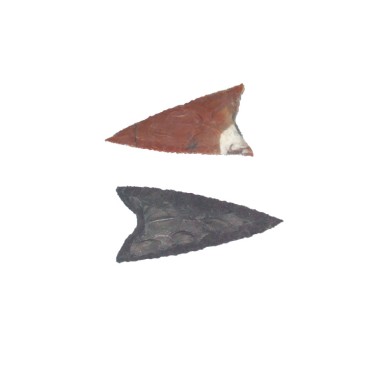03 May 2025
Posted By : Gemstone Export
Agate arrowheads hold a deep historical and cultural significance in Native American heritage. These tools, crafted from semi-precious agate stone, were more than just weapons—they symbolized craftsmanship, survival, and spiritual connection. This article explores the role of agate arrowheads in Native American history, including their creation, uses, and cultural meanings.
To learn more about the broader historical and symbolic importance of agate arrowheads, visit our page on the history and significance of agate arrowheads.
What Are Agate Arrowheads?
Agate arrowheads are pointed tools made from agate, a durable and colorful form of chalcedony quartz. These arrowheads were shaped through flintknapping, a process involving the precise chipping of stone to create sharp edges and defined forms.
Why Agate Was Chosen:
- Hardness: Agate is a strong and resilient stone, ideal for sharp-edged tools.
- Availability: Found in many regions across North America.
- Symbolism: The stone’s natural bands and colors were believed to carry spiritual energy or protective properties.
Role of Agate Arrowheads in Native American Cultures
Agate arrowheads served both practical and ceremonial functions:
Practical Uses:
- Hunting: Used as tips for spears and arrows to hunt animals.
- Defense: Served as weapons in intertribal conflict or personal defense.
- Toolmaking: Repurposed into scrapers and knives for everyday survival tasks.
Ceremonial and Cultural Roles:
- Spiritual Symbolism: Many tribes believed that natural stones carried earth energies.
- Burial Rituals: Arrowheads were placed in graves as offerings or protective tools for the afterlife.
- Trade Items: Beautifully crafted agate arrowheads were often used in trade between tribes.
Examples by Region
Different tribes crafted and used agate arrowheads in unique ways depending on their region:
- Great Plains Tribes: Crafted large agate spearpoints for buffalo hunting.
- Southwestern Tribes: Preferred finer, leaf-shaped agate designs used in rituals.
- Pacific Northwest: Used colorful agates sourced from riverbeds for symbolic purposes.
How They Were Made
Creating an agate arrowhead required skill and time. Here's a simplified breakdown of the process:
- Stone Selection: Only high-quality agate was selected for durability and shape.
- Initial Shaping: Stones were roughly chipped into triangular or leaf forms using hammerstones.
- Pressure Flaking: Finer shaping was done with antler or bone tools for edge refinement.
- Polishing (optional): Some pieces were smoothed or polished for ceremonial use.
FAQs
Q1: Why did Native Americans use agate specifically instead of other stones? Agate's durability and the ease of sharpening it made it ideal. It was also visually appealing and readily available in many tribal regions.
Q2: Are agate arrowheads still used or made today? While no longer used in hunting, modern artisans replicate agate arrowheads for educational, ceremonial, and decorative purposes.
Conclusion
Agate arrowheads are more than ancient tools—they’re a testament to the ingenuity, spirituality, and cultural richness of Native American tribes. Understanding how they were made and used offers a deeper appreciation of the craftsmanship involved.
To further explore their broader significance, visit our guide on the history and meaning of agate arrowheads
